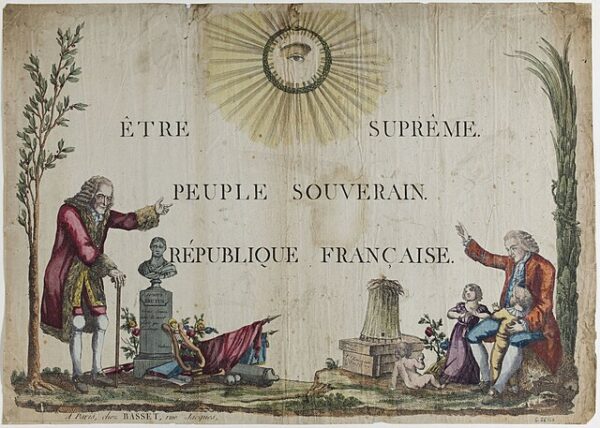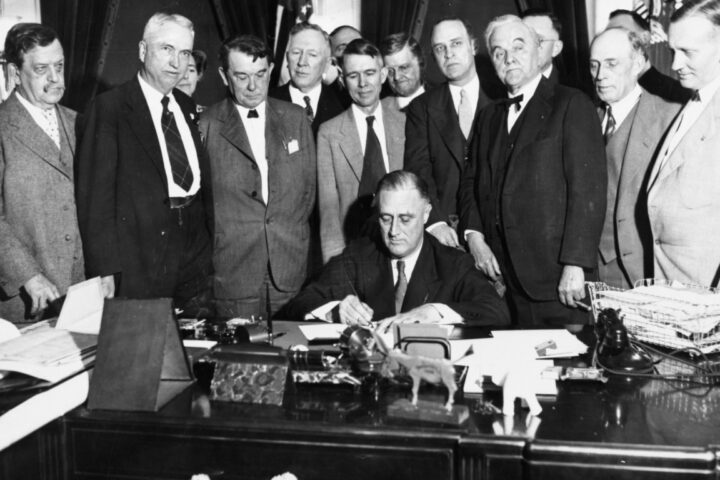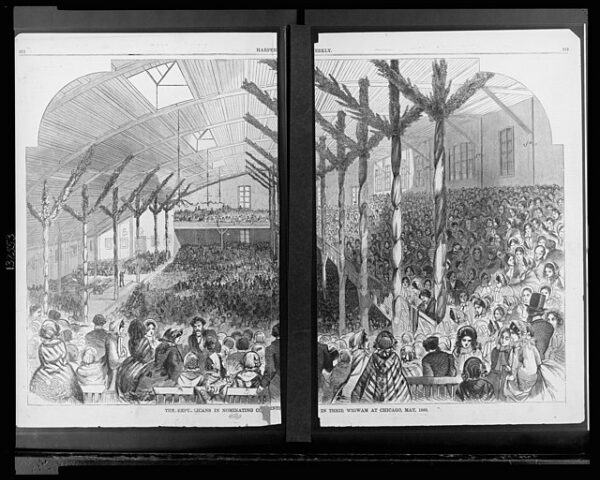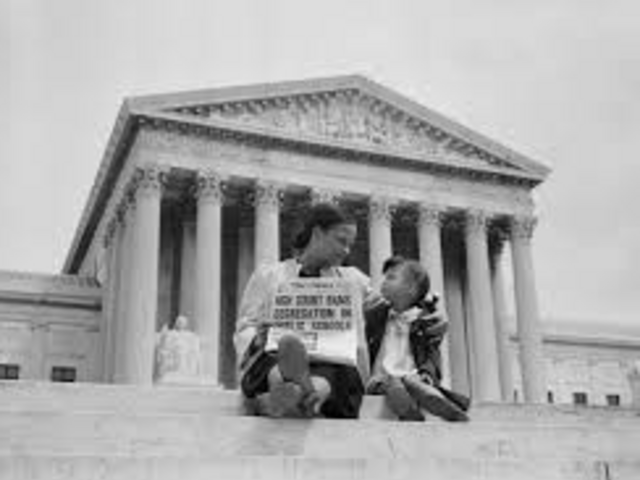On June 8, 1794, the streets of Paris and other French cities thrummed with an extraordinary energy for one of the weirder aspects of the French Revolution. Citizens gathered en masse to witness an event orchestrated by one of the French Revolution’s most enigmatic figures, Maximilien Robespierre. This day marked the inauguration of the Cult of the Supreme Being, a state-sponsored religion intended to replace traditional Catholicism and embody the new revolutionary ethos.
Robespierre, a fervent advocate of Enlightenment principles, envisioned the Cult of the Supreme Being as a means to unite the populace under a common moral and spiritual framework. He believed that the Revolution needed a spiritual dimension to sustain its momentum and to provide a moral compass amidst the political chaos. The Cult emphasized virtues such as justice, heroism, and civic duty, aligning with the revolutionary ideals of liberty, equality, and fraternity.
The festival on June 8 was meticulously planned and grand in scale. Robespierre himself took a leading role in its organization, ensuring that every detail reflected the grandeur and significance of this new state religion. The festivities began in Paris, where an elaborate procession moved from the Tuileries Gardens to the Champs de Mars. Citizens adorned in white, symbolizing purity and virtue, carried flowers and banners. They were accompanied by musicians playing triumphant melodies that filled the air with an aura of exaltation.
Robespierre, dressed in a striking blue coat, led the procession. His presence was magnetic; he was both the orchestrator and the high priest of this new civic faith. As he moved through the throngs, his demeanor exuded a blend of solemnity and fervor. His vision was clear: to replace the fear and superstition of the old religious order with reason and moral clarity.
The ceremony reached its climax at the Champs de Mars, where a massive artificial mountain had been constructed. At its summit stood a statue symbolizing Wisdom, an embodiment of the Supreme Being. Robespierre ascended the mountain, a symbolic gesture of mankind’s journey toward enlightenment and moral elevation. From this vantage point, he delivered a speech that was both a call to virtue and a denunciation of the vices that had plagued the old regime.
“May the Supreme Being engrave in all hearts the eternal idea of justice and equality,” Robespierre proclaimed. His words resonated with the crowd, echoing the revolutionary zeal that had fueled the upheaval in France. He spoke of a new era where reason would triumph over ignorance, and where the natural rights of man would be upheld by divine providence.
Simultaneously, similar festivals were held across France. In cities and towns, citizens participated in local ceremonies that mirrored the grand spectacle in Paris. These events were designed to foster a sense of national unity and collective purpose. Altars were erected in public squares, adorned with symbols of the new faith: the eye of providence, the flame of reason, and the tree of liberty. People sang hymns, recited oaths of loyalty to the Republic, and engaged in communal dances that symbolized the harmony of the new social order.
The introduction of the Cult of the Supreme Being was a bold and controversial move. It highlighted Robespierre’s belief in the necessity of a moral foundation for the revolutionary state. However, it also contributed to the perception of his increasing authoritarianism. Critics accused him of seeking to impose his own ideological vision upon the populace, and some saw the spectacle of the festival as a manifestation of his hubris.






